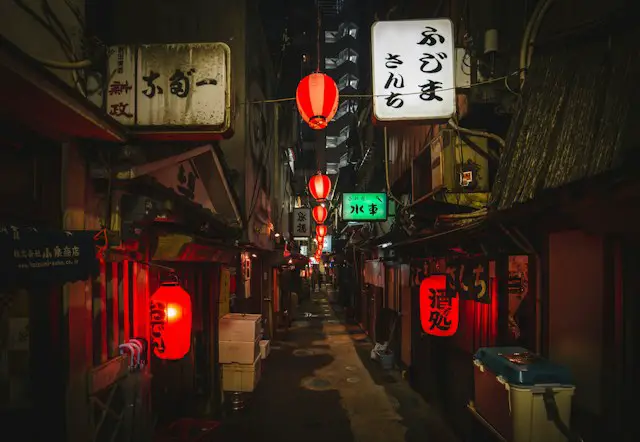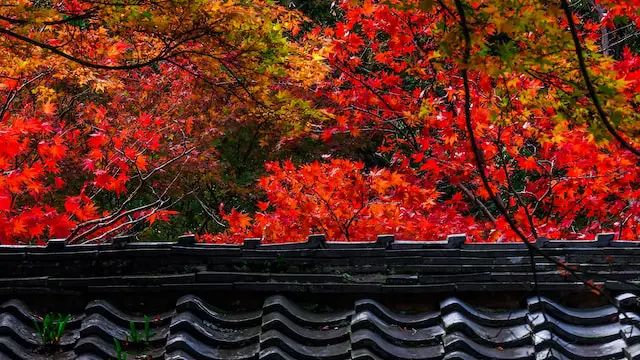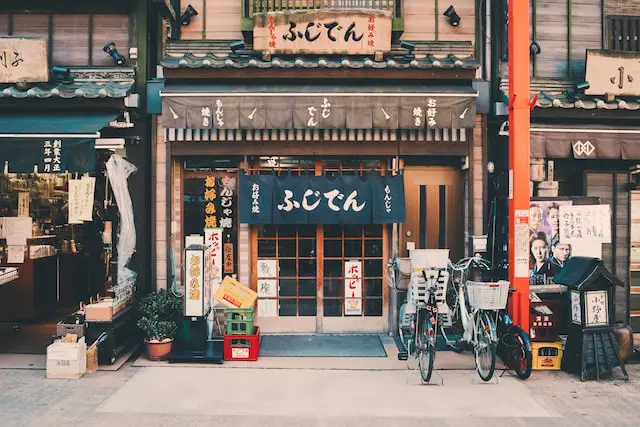Known as the “Little Kyoto”, Kanazawa is a city that sparkles with rich Japanese cultural heritage. This historical haven continues to uphold centuries-old customs soothingly woven into the details of day-to-day life. One stellar representation of this cultural preservation is seen in the city’s lush and timeless Japanese gardens.
In Japanese culture, gardens are more than mere decorative landscaping. They carry deep significance, forming tranquil spaces designed for introspection. Japanese gardens ingeniously harmonize different elements such as water, rocks, trees, and bridges – each embodying individual symbolic meanings.
In the heart of Kanazawa, gardens artistically echo elements of traditional Japanese rural life, offering a serene retreat away from the hustle-bustle of modern society. Each garden in Kanazawa is a vivid tapestry that invites you to immerse yourself in their beauty, tranquility, and the artistry diligently preserved in each corner.
Join us as we explore the gardens of Kanazawa – bask in their serenity, relive their history, and discover the art and philosophy behind their creation.
The Art of Japanese Gardening in Kanazawa
Known for its rich cultural heritage, Kanazawa is a city where traditional Japanese beauty is deeply cherished, especially in its exquisite gardens. Reflective of the ‘Little Kyoto’ tag, the Japanese Gardens in Kanazawa embody an art form that combines elements of nature with meticulous design and tranquil ambiance.
A notable characteristic of these traditional gardens is the thoughtful integration of key elements such as water, rocks, trees, lanterns, and bridges. A well-constructed Japanese Garden is a miniature mirror of the universe that encapsulates the raw elegance of nature condensed in a limited space.
Water is the lifeblood of these gardens, creating an ever-changing scene through its reflections. Rocks, ordained as the bones of the world in ancient Japanese literature, provide the strength and structure, becoming the character-defining elements of the garden. Trees meticulously pruned and carefully placed, contribute depth and elegance, while lanterns and bridges guide the visitor’s eye, creating a seamless blend of symmetrical balance within the garden’s asymmetry. This delicate juxtaposition is the heart of Kanazawa’s Traditional Gardens.
The gardens in Kanazawa are masterpieces, filled with timeless wisdom that invites us to slow down and reconnect with nature. Whether you are a gardening enthusiast or a curious traveler, exploring the gardens of Kanazawa will provide a glimpse into the deep-rooted love for nature and detailed artistry that lies at the heart of Japanese culture.
Steeped in tradition, Kanazawa, often referred to as the Little Kyoto, is a treasury of captivating Japanese culture where history still lives and breathes. A city with a rich cultural heritage, Kanazawa is particularly renowned for its traditional gardens, which are a significant part of Japanese art and culture. Intricately designed to represent diverse landscapes, these gardens offer a serene and spiritual experience.
Dominated by profound symbolism, Japanese gardens represent artistry, echoing silence, and minimalistic elegance. Elements essential to these gardens include pristine bodies of water, artistically placed rocks, and perennial trees, each carrying distinct importance. The use of water signifies renewal, calmness, and continuity in life; rocks, on the other hand, often symbolize strength and permanence. Trees, in different shapes and sizes, contribute to the dynamic aesthetics and play a significant role in embodying the changing seasons.
Apart from these key elements, there is also a strategic use of bridges, which signifies a passage, transition, or journey from one point to another, often associated with life changes or spiritual transportation. Wandering across such bridges, visitors are invited to immerse themselves in this aesthetically profound cultural experience.
One can encounter these spiritually rich Kanazawa traditional gardens, which are not only visually pleasing but also translate the universal underlying themes of the unpredictable yet beautiful journey called life. It’s indeed an encapsulation of the timeless beauty and the commingling narrative of culture, tradition, and philosophy reflected in the many Japanese Gardens Elements.
The Beauty in Each Season at Kenrokuen
The breathtaking beauty of Kenrokuen is a spectacle that transforms with each passing season. Accentuating every shifting phase of nature’s calendar, the garden offers an evolving panoramic display throughout the year.
In spring, the sight of ‘Cherry Blossoms Kenrokuen’ is truly magical. The garden turns into an enchanting realm as hundreds of cherry trees burst into a symphony of pastel blossoms, drawing visitors from around the world to experience this timeless spectacle.
The scorching summer gives way to lush greenery, with the smell of freshly watered lawns and blooming flowers filling the air. The cool shade under the thick canopy of trees provides a serene escape from the city bustle.
Autumn at Kenrokuen presents a giddy palette of colors, from the fiery red and orange maples to the stunning yellow ginkgoes. The garden becomes an artist’s canvas, heralding the transition into the tranquil winter calm.
‘Kenrokuen in Winter’ turns into a serene snowscape, with trees adorned with yukitsuri—a traditional method of using ropes to protect the branches of trees from heavy snows. As you tread through the winter snow, the landscape’s stark beauty evokes a sense of wonder and tranquility.
To truly appreciate the changing seasons of Japanese landscape gardens, and especially Kenrokuen, one must experience it in all its seasonal glory. Each offers its unique appeal and emotions, bounding within the cycle of life.
Remember to capture these moments, but do not forget to take some time to just sit back and soak in the beauty in front of you without the barrier of a lens. After all, there’s an undeniable satisfaction in experiencing it all first-hand.
Gyokusen’inmaru Garden – A Historical Masterpiece
Welcoming you with its lavish greenery and historical allure is the Gyokusen’inmaru Garden, often hailed as a significant marker of Kanazawa’s proud samurai heritage. This garden has the distinction of being restored according to the vestiges of the original garden layout from the Edo period, therefore immersing you in an experience that transcends time.
Originally built for the wife of the 13th lord of the Kaga Clan, the garden exhibits a myriad of beautiful features like a pond shaped to resemble the character of ‘heart’. Imagine serene waters reflecting the sky, with carefully landscaped rocks and trees embodying the unison of nature and art.
In the evening, the garden transforms into a lit-up spectacle, where the intricacies of the garden design are illuminated under soft lights. The atmosphere is nothing short of magical.
The cherry blossoms that bloom in spring add a mesmerizing tint of pink, making Gyokusen’inmaru an ideal location for Hanami (cherry blossom viewing). Not just a delight to the eyes, the garden is also a treasure trove of history depicting the luxe lives led by the samurai back in the days.
Delve deeper into Kanazawa’s samurai gardens and let the silent whispers of the Gyokusen’inmaru gardens narrate the fascinating episodes of time gone by.
Japanese gardens have a profound philosophical essence that goes beyond mere aesthetics. Japanese Garden Philosophy is characterized by principles of harmony, tranquillity, and simplicity, taking inspiration from Buddhist, Shinto, and Taoist philosophies.
A visit to a Japanese garden is intended to invoke emotions, elicit contemplative thoughts, and draw the observer closer to nature. A keen eye can spot the prevalent theme of representing vast landscapes in a compact space, which symbolizes the Buddhist concept of the universe.
Japanese Zen Gardens
But what truly distills the serenity of Japanese gardens is their embodiment of the Zen philosophy. Described as ‘miniature landscapes’, these gardens are designed to aid meditation; the meticulous raking of sand in Japanese Zen Gardens oftentimes representing the ripples of the ocean.
In Kanazawa’s gardens, you can immerse yourself in their tranquillity and perhaps, intuit the philosophical subtleties that they capture. The sense of calm that pervades these gardens enables a meditative state of mind that colors your overall experience. The tiniest elements, such as a single leaf or the trickling water, invite you to learn the deeper Japanese principle of mindfulness and to appreciate the beauty in the minutiae of life.
Visiting Kanazawa’s gardens allow you to not only witness the remarkable craftsmanship and aesthetics but delve into the underlying philosophy. It encourages you to find a deeper connection with nature and imbibe a sense of balance into your lifestyle.
Moreover, don’t forget to take out a moment to simply sit in silence and soak in the wisdom these meticulously curated landscapes exuberate.
Steeped in the tranquil beauty of traditional Japanese culture, Kanazawa’s gardens are truly a sight to behold after sunset. The Night Viewing of Gardens in Kanazawa is an exquisite experience that leaves an indelible mark on any visitor.
This nocturnal voyage into Kanazawa’s verdant realm unveils an entirely different landscape, where nature’s striking elements are painted in a delicate dance of shadows and light under the soft glow of the moon. Paired with a profound silence, it creates a mystical aura that transports you to a different dimension – eloquent testimony to the allure of night tours in Japanese Gardens.
Kenrokuen, with its impressive array of trees, stones, and lanterns, metamorphoses into a surreal scene, each element casting intriguing silhouettes and inviting contemplation. Wander around and inhale the freshness of night-blooming flowers or listen to the soothing rustle of leaves and the calming flow of the garden’s streams. Each garden, carrying its unique charm, is a perfect backdrop for meditation, relaxation, or even a moonlit picnic.
If you’re searching for serene moments and a magical ambiance both invigorating yet calming to the senses, you simply can’t omit a night tour of Kanazawa’s gardens from your itinerary. Not just a treat for the eyes, it’s an entire sensory delight that punctuates the quintessential cultural experience in this Japanese wonder.
Be it the seasoned traveler, the ardent nature lover, or the passionate culture enthusiast, the enchanting after-dark garden tour serves up a spectacle of poetic solitude and natural elegance, truly a memorable journey emanating the essence of Japan.
If you’re planning a visit to Kanazawa, here’s the insightful information that will make your journey seamless and enjoyable. Visiting the beautiful gardens of the city is undoubtedly a captivating experience, but understanding the best times to visit, as well as the logistics involved, can make your trip even better.
The best times to visit the gardens of Kanazawa depends on what you want to see. To witness the famous Kenrokuen in the vibrant hues of cherry blossoms, spring is the ideal time. Meanwhile, winter presents a distinct charm, especially with snow-dusted landscapes around Kenrokuen. However, keep in mind that Japan’s peak travel times often coincide with these seasonally changing views, so expect bigger crowds during these periods.
Upon getting to Kanazawa, accessibility to these gardens is convenient. The city has efficient public transportation systems including buses and taxis. Also, you can leisurely explore the city through its bike rental services.
Admission fees for Kenrokuen are around 310 yen for adults, and it’s free for school children or those under the age of 18. With regards to the lesser-known but equally stunning Gyokusen’inmaru Garden, entry is free and it’s open from around 7 am until 6 pm.
Before you head out, ensure to check the weather and the local holidays, as these factors can influence your experience. Remember, planning out these minor details can go a long way in creating an unforgettable memory of your visit to Kanazawa’s breathtaking gardens.
So, are you ready to immerse yourself in the serene beauty of Kanazawa? Happy travelling!
If you’re making plans to explore the resplendent beauty of Kanazawa’s gardens, keep in mind these practical travel tips to make your visit even more purposeful and memorable.
Before planning your visit, remember that different gardens can offer distinct experiences based on the season. For example, Kenrokuen Garden is enthralling all year round, but it presents a special spectacle during winter trellised trees and during spring amid cherry blossoms. Hence, timing your visit around these periods can offer an exceptional experience.
Usually, the gardens open early in the morning – a perfect time for visitors who wish to appreciate tranquility in its best form. Most gardens are accessible to the public by paying a nominal admission fee. Keep in mind to check the local website or tourist information center for updated information on garden timings as well as admission fees.
These captivating gardens of Kanazawa are accessible by various modes of transportation including buses and taxis. Also, there’s an option to rent bicycles for those who wish to combine a love of nature with some exercise.
Visitors with disabilities are also given consideration, and efforts have been made in several gardens to ensure accessibility for all. In case of doubt, feel free to reach out to local tourist information centers.
Moreover, it’s always a prudent idea to carry along a map of the garden to ensure that you do not miss any significant scenic locations. Many gardens offer tea houses and shops where you can stop by for a warm cup of traditional matcha tea or to buy souvenirs.
In conclusion, paying heed to these Kanazawa travel tips and knowing when to visit Kanazawa gardens can play a crucial role in making your visit to these remarkable gardens a fascinating and unforgettable experience.
Conclusion
In conclusion, the heart and soul of Kanazawa lie in its beautiful and tranquil gardens. A trip to this ‘Little Kyoto’ is incomplete without immersing yourself in the serene beauty of Kenrokuen and Gyokusen’inmaru Gardens.
Each garden is a masterpiece in its own right, acting as a silent narrator of Japan’s rich heritage, brimming with stories of samurai honor, mesmerizing seasonal beauty, age-old tea ceremonies, and Zen philosophy.
Kanazawa allows you to step back in time, basking in nature’s grandeur – a delight that is just as enthralling under the moonlit sky as it is in daylight.
So, whether you are a garden enthusiast or a curious traveler on the path of discovery, exploring Kanazawa’s gardens provides an unforgettable experience. With these Kanazawa Travel Tips, embark on a journey to unveil a remarkable aspect of traditional Japan, and let the extraordinary continue to unfold.




